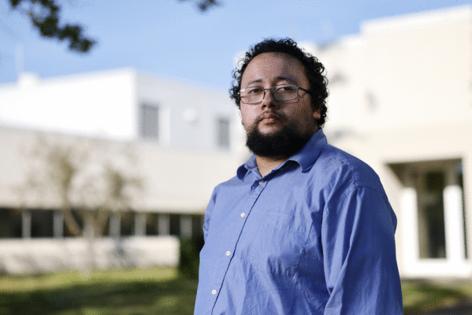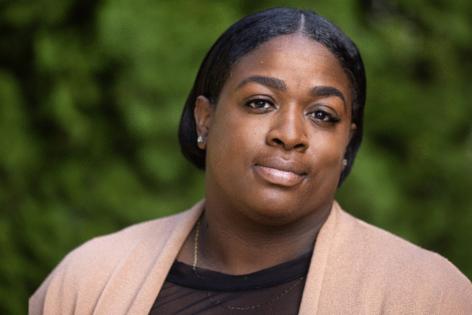Barely getting by on one income in the Seattle area
Published in Home and Consumer News
Rabi Asghar, 37, didn’t realize just how expensive divorced life would be until after the paperwork was filed and the dust had settled.
Without a partner to split bills, the cost of daily life ballooned. For the first time in years, he found himself having to shoulder the full burden of utilities and groceries on his own. His ex had taken the shared car in their separation, so he needed to lease one. Including insurance and car tags, that added $8,500 to his yearly expenses.
He kept their house in the Hillman City neighborhood of Seattle, but paying the full mortgage meant his monthly payments doubled to reach nearly $3,000. After refinancing earlier this year to remove his ex’s name from the property title, higher interest rates pushed those payments up to $4,900.
“It’s just a matter of being on a very tight rope,” Asghar said. “You have a lot more space to fall over when you’ve got an excess amount of money. But when you are cut down considerably — you just don’t even think about it until it happens — then you’re watching every single receipt.”
Across the Seattle area, which has one of the nation’s highest median incomes, single-income households like Asghar’s face unique challenges in grappling with the costs of living and expensive housing. The median home price in King County topped $1 million in May, and even though it has declined slightly since, it remains one of the highest median prices in the country. King County also had the highest average apartment rent in the state at $2,081, as of the second quarter of 2024, according to a University of Washington report.
The result: Compared with their dual-income counterparts, solo individuals or single parents living on their own find it increasingly hard to manage their household expenses, prepare for financial emergencies and set aside money for savings. Many still remain attached to the area for family or work ties, even as they struggle to get by.
Some learn to tighten their belt to keep living here even on a six-figure salary.
Asghar, an electrical engineer at Seattle City Light with a gross salary of $142,000, said the bulk of his take-home pay goes to covering housing, transportation, student loan payments and tuition at his son’s Montessori school.
Early in the aftermath of his divorce, Asghar felt overwhelmed by change, so he continued to live as if his financial circumstances hadn’t shifted. Eventually, he racked up $16,000 in credit card debt, prompting him to seriously overhaul his spending.
Now, he shops at warehouses like WinCo and Costco instead of grocery stores. He canceled all his subscription services, and he thinks twice before taking his son to the zoo or the museum. He no longer goes out with friends for drinks or movies.
“I just couldn’t afford it,” he said. Earlier this year, Asghar received a check for back pay after union contract negotiations, which he used to significantly pay down his credit card debt. He estimates he still has about a $3,400 remaining balance.
Asghar feels pressure to sell his house and move some place cheaper, but he’s holding out for now. It’s his son’s childhood home, a site of cherished memories he’s not ready to leave. Still, he said, “it seems like the city really wants me to not be here.”
Caught between side jobs and family time
For some single-income households, one way to make ends meet is to take on extra work, even if it means spending less time as a family.
Angel Berry, 40, is a single mother of three in Des Moines, Washington. At her day job as a case manager for at-risk youth, she makes about $5,000 a month in take-home pay. For years, life was modest but manageable.
That changed in June 2023 when her car broke down. Suddenly, she had to contend with an extra $1,000 in costs per month in payments and insurance. She felt like her life had tipped from getting ahead to barely getting by.
Using her new car, she began driving for DoorDash in the evenings, which brought in an extra $300 to $400 a month. But doing so also raised her gas costs and left her with significantly less time to spend with her children. She finds herself caught between the guilt of being away from them and anxiety about not being able to meet their needs.
“Being an only parent on one income is hard,” Berry said. “You’re feeling like you’re not giving your children an adequate life because you’re always having to take away from something.”
Previously, Berry would take each of her children out to a restaurant once a month to spend one-on-one time with them. They would also go out to eat as a family or see movies in the theater. Now, she has to be more creative with money.
She took her kids to work with her this summer to save on child care. She and other women in her family have an ongoing group chat, and they’re quick to pool money when one of them is tight on cash.
The percentage of families headed by single parents like Berry has grown significantly in Washington across the past half-century, mirroring national trends. In 1960, slightly over 8% of families with children under 18 were in single-parent households in Washington; in 2022, that number was nearly 30%.
According to the Annie E. Casey Foundation, a nonprofit focused on youth well-being, single-parent households are more likely to experience poverty, which is linked to parental stress. Per 2022 nationwide data, 28% of single-parent families experienced poverty compared with 14% of all families. In Washington, 22% of single-parent families experienced poverty, compared with 10% of all families.
Berry says that her mental health would likely improve if she lived in a dual-income household. She thinks she’d have more patience and compassion for her kids. But it’s hard these days, she said, because she’s so tired from working all the time.
Even for families that don’t fall under the official definition of poverty, many like Berry still feel stretched beyond their limits. Berry makes too much to qualify for means-tested social safety programs, such as food stamps or cash assistance. Sometimes, however, she has to use the same resources that she recommends to her clients — like food banks and utility payment assistance programs — to make ends meet.
She’s not alone. According to the U.S. Department of Agriculture, food insecurity is significantly more prevalent among single-parent households, particularly those led by single mothers.
Paying off debt or saving for retirement?
Gabe Santana, 27, doesn’t have dependents. But to feel financially secure, he works two jobs for a total of 64 hours per week. In addition to his full-time day job during the week, he works two 12-hour shifts, on Saturday and Sunday nights.
That makes his Mondays particularly brutal. On a typical Sunday night, he’ll clock into his job as a technician at the University of Washington Medical Center, which he leaves around 7 a.m. the next morning. Just one hour later, he goes to his other position at the Washington State Department of Health, where he works on a team that tests shellfish for toxins. There, he puts in another eight hours before he returns to his studio apartment in the International District, bone-tired even as the week has barely begun.
“It’s definitely difficult not to feel an element of hopelessness,” Santana said.
Working two jobs doesn’t feel like a choice for Santana but a necessity to afford living in Seattle. In addition to his day-to-day costs, he estimates that he has $35,000 in student loan debt to repay.
Before he found his job at the state health department, he was living off credit cards. Today, he has a total balance of $9,000 split between two accounts, one that incurs interest at a rate of 20% and the other at 28%. One day, Santana would like to begin setting money aside for an emergency fund and retirement, but as a single-income earner, he’s doubtful that day will come any time soon.
“Dual-income households are typically a lot more prepared to meet the challenge of getting ahead,” he said. Santana has only himself to rely on for all his needs, both short- and long-term. If he were in a dual-income household, he said, “peace of mind would come a lot faster, the ability to prepare would be greater.”
There’s some data to back up Santana’s hunch. A Pew Research Center analysis in 2022 found that adults in households with more than one earner fare better economically than those with just one earner. In 2021, more than half of adults living in single-earner households were in a lower-income tier. By comparison, just 20% of those living in multiearner households were in a lower-income tier.
Working two jobs means that Santana feels considerably drained at the end of each shift. In the free time he does have, he prefers to decompress by watching YouTube videos or playing video games.
Santana said it’s hard not to feel a bit angry and trapped by his circumstances. He couldn’t get his current full-time job without a degree, but now that he has one, he can’t earn enough money to pay off the debt he took on to get it.
“It takes a lot more to get by than people think.”
©2024 The Seattle Times. Visit seattletimes.com. Distributed by Tribune Content Agency, LLC.













Comments